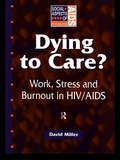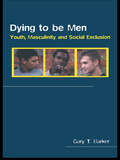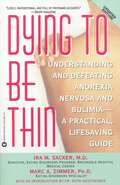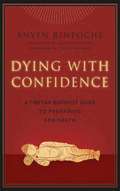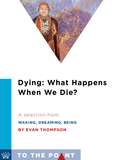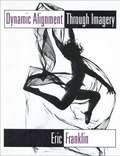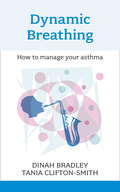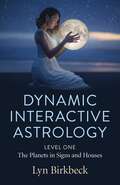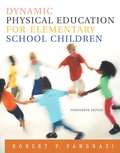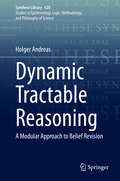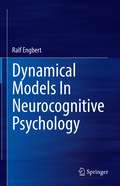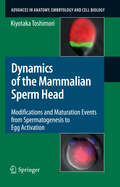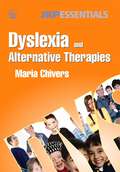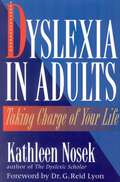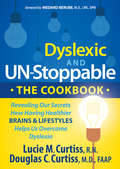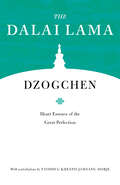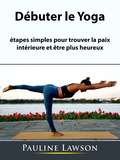- Table View
- List View
Dying to Care: Work, Stress and Burnout in HIV/AIDS Professionals (Social Aspects of AIDS)
by David MillerBased on major multi-centre research in the UK, Dying to Care identifies why work stress is a problem in health care generally, and in HIV health care in particular. The similarities and differences between work stress experienced in general health care settings and in HIV/AIDS are explored in a state-of-the-art review of research and experience in the field to date. The book has a practical focus, and goes on to explore ways in which the unique stresses of patient advocacy in HIV/AIDS can be addressed, identifying the best approaches for management. Highlighting the practical importance of a clear distinction between the burnout and work stress for design of strategies for burnout prevention, the emergence of the concept of burnout is described and the general historical confusion between work stress and burnout examined. This will be a key handbook for managers, physicians, nurses, social workers, health advisors and counsellors working in or alongside healthcare.
Dying to Know: Is There Life After Death?
by Josh LangleyRide shotgun with author and award-winning copywriter Josh Langley as he battles his inner-cynic and subjects himself to a barrage of strange and creepy adventures as a result of his lifelong obsession with the afterlife. Determined to find out what happens when we die but realising it’s unlikely that an obliging ghost is going to jump out in front of him with the verdict, Josh designs his own unique “afterlife investigation plan" and sets off on an extraordinary journey in a quest for answers to the question we all secretly want to know. Things get a little weird and spooky as he visits crematoriums, experiments with out-of-body experiences, attempts past-life regressions, conjures up dead people, converses with his long dead grandmother and is scared witless on a terrifying ghost hunt, to name a few. Explore the paranormal from the safety of your armchair with Dying to Know a humorous and moving travelogue like nothing else before it. Join Josh as he searches for answers to the question that has plagued him for years, and reaches his final, and somewhat surprising, thought-provoking conclusion.
Dying to Wake Up: A Doctor's Voyage into the Afterlife and the Wisdom He Brought Back
by Paul Perry Dr Rajiv PartiDr Rajiv Parti was the last man to believe in heaven or hell – until he saw them with his own eyes. Dr Parti was a wealthy man of science with a successful career as the Chief of Anesthesiology at the Bakersfield Heart Hospital in California. He demanded the same success from his son, whose failures provoked episodes of physical abuse from Dr Parti. However, his fate was overturned in 2005, when he was diagnosed with cancer. During his seventh operation against the disease, dying from sepsis with a 105 degree fever, Dr Parti left his body and watched his own operation from the ceiling. What followed was a profound near-death experience, in which Dr Parti was met by archangels and his deceased father, who led him to witness both heaven and hell. From the angels, he learned lessons of spiritual health that they insisted he bring down to earth – to do so, Dr Parti knew he had to change his ways.After his near-death experience, Dr Parti awoke a new man. He gave away his mansion, quit his career, opened a wellness clinic and completely turned around his relationships with his family. In this remarkable true story of spiritual transformation, Dr Parti provides rare details of heaven, hell, the afterlife and angels. In sharing the lessons and eternal truths from the Divine that changed him forever, Dr Parti offers his audience the opportunity to attain peace and live a better life here on Earth.
Dying to Wake Up: A Doctor's Voyage into the Afterlife and the Wisdom He Brought Back
by Paul Perry Rajiv Parti Raymond Moody Jr.A rare glimpse into heaven, hell, and previous lives--Dr. Rajiv Parti's near-death experience brought him on a journey through the afterworld, leading to a spiritual awakening that transformed his career, his lifestyle, and even his fundamental beliefs.Before his near-death experience, Dr. Rajiv Parti was a wealthy man of science with a successful career as the Chief of Anesthesiology at the Bakersfield Heart Hospital in California. He demanded the same success from his son, whose failures provoked episodes of physical abuse from Dr. Parti. All in all, Dr. Parti was the last man to believe in heaven or hell--that is, until he saw them with his own eyes. When Dr. Parti had his near-death experience on the operating table, he first watched his own operation from the ceiling--even recalling a joke told by his doctors during his surgery. He was greeted by archangels and his deceased father who led him through the tortures of hell and revealed the toxic cycle of violence that has plagued his family for generations. He even reviewed the struggles of his previous lives which, in many ways, reflected those he still faced in the present. Finally, he experienced heaven. From the angels, he learned lessons of spiritual health that they insisted he bring down to earth--to do so, Dr. Parti knew he had to change his ways. After his near-death experience, Dr. Parti awoke a new man. He gave away his mansion, quit his career, opened a wellness clinic, and completely turned around his relationships with his family. To this day, he still converses with angels and spreads their wisdom to the living. In this remarkable true story of spiritual transformation, Dr. Parti provides rare details of heaven, hell, the afterlife, and angels. In sharing the lessons and eternal truths from the Divine that changed him forever, Dr. Parti offers his audience the opportunity to attain peace and live a better life here on Earth.
Dying to be Men: Youth, Masculinity and Social Exclusion (Sexuality, Culture and Health)
by Gary BarkerOne of the first comparative reflections of its kind, this book examines the challenges that young men face when trying to grow up in societies where violence is the norm. Barker, who has worked directly with low-income youth and witnessed first hand the violence he describes, provides a compelling account of the young men's struggles. He discusses the problems these men face in other areas of their lives, including the difficulty of staying in school, the multiple challenges of coming of age as men in the face of social exclusion, including finding meaningful employment, and their interactions with young women, including sexual behaviour and the implications of this for HIV/AIDS prevention. The book presents examples of evaluated programs that have been able to aid young men in rethinking what it means to be a man and ultimately focuses on 'voices of resistance' – young men who find ways to stay out of violence and to show respect and equality in their relationships, even in settings where male violence and rigid attitudes about manhood are prevalent.
Dying to be Thin: Understanding and Defeating Anorexia Nervosa and Bulimia--A Practical, Lifesaving Guide
by Ira M. Sacker Marc A. ZimmerDr. Sacker and Dr. Zimmer explain in full detail the causes and symptoms of these disorders and how and where to find help. Using case histories and first-person accounts by patients, their families, their physicians and friends, Dying To Be Thin is the complete resource for anyone concerned with these dangerous disorders.
Dying with Confidence
by Tulku Thondup Rinpoche Anyen Rinpoche Allison Graboski Eileen CahoonAnyen Rinpoche's wise and reassuring voice guides readers through the Tibetan Buddhist teachings on death and dying, while providing practical tools for end-of-life and estate planning. Dying with Confidence reads like a remarkable how-to guide, laying out in clear and straightforward language the preparations we must make and the best practices to use while dying to further our goal of enlightenment.
Dying: A Selection from Waking, Dreaming, Being: Self and Consciousness in Neuroscience, Meditation, and Philosophy (To the Point)
by Evan ThompsonIn the ancient Indian epic, Mahabharata, the Lord of Death asks, "What is the most wondrous thing in the world?", and his son answers, "It is that all around us people can be dying and we don't believe it can happen to us." This refusal to face the inevitability of death is especially prevalent in modern Western societies. We look to science to tell us how things are but biomedicine and neuroscience divest death of any personal significance by presenting it as just the breakdown of the body and the cessation of consciousness. The Tibetan Buddhist perspective stands in sharp contrast to this modern scientific notion of death. This tradition conceives dying not as the mere termination of living processes within the body, but as a rite of passage and transformation of consciousness. Physical death, in this tradition, initiates a transition from one of the six bardos ("in-between states") of consciousness to an opportunity for total enlightenment. In Dying: What Happens When We Die?, Evan Thompson establishes a middle ground between the depersonalized, scientific account of death and the highly ritualized notion of death found in Tibetan Buddhism. Thompson's depiction of death and dying offers an insightful neurobiological analysis while also delving into the phenomenology of death, examining the psychological and spiritual effects of dying on human consciousness. In a trenchant critique of the near-death experience literature, he shows that these experiences do not provide evidence for the continuation of consciousness after death, but also that they must be understood phenomenologically and not in purely neuroscience terms. We must learn to tolerate the "ultimate ungraspability of death" by bearing witness to dying and death instead of turning away from them. We can learn to face the experience of dying through meditative practice, and to view the final moments of life not as a frightening inevitability to be shunned or ignored, but as a deeply personal experience to be accepted and even embraced.
Dying: Self and Consciousness in Neuroscience, Meditation, and Philosophy
by Evan ThompsonIn the ancient Indian epic, Mahabharata, the Lord of Death asks, "What is the most wondrous thing in the world?", and his son answers, "It is that all around us people can be dying and we don't believe it can happen to us." This refusal to face the inevitability of death is especially prevalent in modern Western societies. We look to science to tell us how things are but biomedicine and neuroscience divest death of any personal significance by presenting it as just the breakdown of the body and the cessation of consciousness. The Tibetan Buddhist perspective stands in sharp contrast to this modern scientific notion of death. This tradition conceives dying not as the mere termination of living processes within the body, but as a rite of passage and transformation of consciousness. Physical death, in this tradition, initiates a transition from one of the six bardos ("in-between states") of consciousness to an opportunity for total enlightenment. In Dying: What Happens When We Die?, Evan Thompson establishes a middle ground between the depersonalized, scientific account of death and the highly ritualized notion of death found in Tibetan Buddhism. Thompson's depiction of death and dying offers an insightful neurobiological analysis while also delving into the phenomenology of death, examining the psychological and spiritual effects of dying on human consciousness. In a trenchant critique of the near-death experience literature, he shows that these experiences do not provide evidence for the continuation of consciousness after death, but also that they must be understood phenomenologically and not in purely neuroscience terms. We must learn to tolerate the "ultimate ungraspability of death" by bearing witness to dying and death instead of turning away from them. We can learn to face the experience of dying through meditative practice, and to view the final moments of life not as a frightening inevitability to be shunned or ignored, but as a deeply personal experience to be accepted and even embraced..
Dynamic Alignment Through Imagery
by Eric FranklinDynamic Alignment Through Imagery shows how to use imaging techniques to improve posture and alignment, and to release excess tension. The illustrations help explain the images and exercises, and show how to use them in a variety of contexts.
Dynamic Breathing: How To Manage Your Asthma
by Dinah BradleyGeorge Bernard Shaw was correct to say that awareness of breathing already indicates problems. The sensation of dyspnoea (difficulty in breathing) varies from person to person, but is the defining mark of asthma. According to the WHO, asthma affects some 150 million people globally; it even affects animals. People with asthma often develop appalling breathing habits which worsen or precipitate attacks. Since the advent of inhalers and modern drugs over the last 30 years, doctors have paid less attention to the business of breathing itself. Yet, correct breathing helps people reduce their medication and their stress levels, and enables them to exercise more effectively and enjoy life with more confidence. This book, written by two physiotherapists, gives a thorough view of what happens in the chest and in the brain during breathing, and gives detailed and illustrated suggestions on how to breathe for maximum comfort for asthma and other disorders.
Dynamic Interactive Astrology
by Lyn BirkbeckDynamic Interactive Astrology uses a comprehensive and sophisticated set of keywords, and subsequent key phrases created by the user, that provide immediate access to the meanings in one's birth chart of the Planets, Signs, Houses and Aspects - the stuff of astrology. Specific questions that are addressed to the key phrases that the reader/seeker has created initiate a process of dynamic interaction and are based on the idea that the reader/seeker already has the answers to these questions inside them. This idea is akin to the basic psychotherapeutic premise that the practitioner never tells their client what they are like or what to do, but asks questions that elicit the client's innate self-awareness. This is known as 'clean' psychology as it avoids the practitioner's own personal agenda getting in the way. Having utilised these two methods the user can then apply them, safely, to other individuals and their birth charts.
Dynamic Physical Education for Elementary School Children (fourteenth edition)
by Robert P. PangraziIncludes directions for protecting students from injury, how to play such games as soccer, and seemingly everything a teacher would need to design and implement a successful and appropriate PE program for young students.
Dynamic Tractable Reasoning: A Modular Approach to Belief Revision (Synthese Library #420)
by Holger AndreasThis book aims to lay bare the logical foundations of tractable reasoning. It draws on Marvin Minsky's seminal work on frames, which has been highly influential in computer science and, to a lesser extent, in cognitive science. Only very few people have explored ideas about frames in logic, which is why the investigation in this book breaks new ground. The apparent intractability of dynamic, inferential reasoning is an unsolved problem in both cognitive science and logic-oriented artificial intelligence. By means of a logical investigation of frames and frame concepts, Andreas devises a novel logic of tractable reasoning, called frame logic. Moreover, he devises a novel belief revision scheme, which is tractable for frame logic. These tractability results shed new light on our logical and cognitive means to carry out dynamic, inferential reasoning. Modularity remains central for tractability, and so the author sets forth a logical variant of the massive modularity hypothesis in cognitive science.This book conducts a sustained and detailed examination of the structure of tractable and intelligible reasoning in cognitive science and artificial intelligence. Working from the perspective of formal epistemology and cognitive science, Andreas uses structuralist notions from Bourbaki and Sneed to provide new foundational analyses of frames, object-oriented programming, belief revision, and truth maintenance. Andreas then builds on these analyses to construct a novel logic of tractable reasoning he calls frame logic, together with a novel belief revision scheme that is tractable for frame logic. Put together, these logical analyses and tractability results provide new understandings of dynamic and inferential reasoning.Jon Doyle, North Carolina State University
Dynamical Models In Neurocognitive Psychology
by Ralf EngbertThe development of cognitive models is a key step in the challenging research program to advance our understanding of human cognition and behavior. Dynamical models represent a general and flexible approach to cognitive modeling. This introduction focuses on applications of stochastic processes and dynamical systems to model cognition. The dynamical approach is particularly useful to emphasize the strong link between experimental research (and its paradigms), data analysis, and mathematical models including their computer implementation for numerical simulation. Most of specific examples are from the domain of eye movement research, with concepts being applicable to a broad range of problems in cognitive modeling. The textbook aims at the graduate and/or advanced undergraduate level for students in Cognitive Science and related disciplines such as Psychology and Computer Science. Joint introduction of the theory of cognitive processes and mathematical models, their underlying mathematical concepts, numerical simulation, and analysis;The focus on eye movements provide a theoretically coherent, but very general application area;Computer code in R Programming Language for Statistical Computing is available for all examples, figures, and solutions to exercises.
Dynamically Oriented Art Therapy: Its Principles and Practice, Illustrated with Three Case Studies
by Margaret NaumburgThis book uses 3 emotionally disturbed women to illustrate how the art of therapy works in treatment.
Dynamics of Health Care in Society
by Roxann Delaet"Dynamics of Health Care in Society is an introductory textbook derived from key titles in the Lippincott Williams & Wilkins I Wolters Kluwer Health library. Chapters 1 through 20, the appendices, and the glossary are from the textbook: Introduction to Health Care and Careers; Chapter 21 is from the textbook: The Ethical Component of Nursing Education:Integrating Ethics Into Clinical Experience; Chapter 22 stems from the textbook: Nursing in Today's World:Trends, Issues, & Management, Tenth Edition.
Dynamics of the Mammalian Sperm Head
by Kiyotaka ToshimoriMammalian spermatozoa have complex structures. The structure-function relationship of sperm has been studied from various viewpoints. Accumulated evidence has shown that the sperm components undergo sequential changes from the beginning of spermatogenesis to the time of fertilization/embryogenesis. Structural analyses have been performed using various new techniques of light and electron microscopy as well as immunohistochemistry and immunocytochemistry in combination with specific probes such as antibodies against sperm components. Recently developed gene-manipulation techniques have accelerated investigations on the events that govern the relationship between the structure and molecular components of sperm. In addition, animal models with gene manipulations have been shown to exhibit various morphological and functional abnormalities that lead to infertility. In this book, I discuss the events that occur in the normal sperm head and govern the structure-function relationship from the time of spermatogenesis to that of fertilization or egg activation. In this regard, I describe dynamic modifications and maturation events occurring in sperm-head components and compare the outcomes of these events with the outcomes of their failure.
Dyslexia and Alternative Therapies
by Maria Chivers'A good book about how alternative therapies can help dyslexia. It mentions each therapy individually and explains what it is, how it works, how many sessions are needed, who will benefit, and if it can be done at home.' - Education Otherwise This comprehensive book offers clear and balanced information on a range of alternative therapies for individuals with dyslexia, dyscalculia, dyspraxia or ADHD. The author provides an overview of each therapeutic option, method of use and case examples, covering nutritional supplements, massage, acupuncture and hypnotherapy, among others. She also includes contributions from experienced alternative therapists, offering an insider's view of what works and what does not. Her objective approach will enable the reader to make an informed choice from among the many available options. A bibliography and a list of useful contacts are also provided. This book is a key resource for anyone interested in exploring alternative therapy approaches to dyslexia and related difficulties, particularly for parents of people with dyslexia, dyslexics themselves and the professionals who work with them.
Dyslexia in Adults: Taking Charge of Your Life
by Kathleen NosekAuthor Kathleen Nosek offers dyslexic adults a unique approach that gets to the heart of the biggest problem they face—the shame and battered self-esteem resulting from decades of struggling with this frustrating and often misunderstood learning disability.
Dyslexic and Un-Stoppable: Revealing Our Secrets How Having Healthier Brains & Lifestyles Helps Us Overcome Dyslexia
by Lucie M. Curtiss Douglas C. Curtiss Medard BerubeDyslexic and Un-Stoppable The Cookbook: Revealing Our Secrets How Having Healthier Brains and Lifestyles Helps Us Overcome Dyslexia, shares nutritional facts and healthier recipes Lucie and Dr. Doug Curtiss have incorporated in their daily routine. Dyslexic and Un-Stoppable The Cookbook complements Dyslexic AND UN-Stoppable: How Dyslexia Helps Us Create the Life of Our Dreams and How YOU Can Do It Too!, by identifying healthy, beneficial ingredients to improve the odds of overcoming dyslexia. Lucie M. Curtiss, RN, and Dr. Douglas C. Curtiss, FAAP, are the cofounders of Dyslexic AND UN-Stoppable, LLC. Their mission is to empower dyslexic children to become UN-Stoppable and overcome dyslexia by rediscovering their inner power. They are here to remind dyslexics that they are SMART!
Dzogchen: Heart Essence of the Great Perfection (Core Teachings of Dalai Lama)
by The Dalai LamaThis is the most informative and thorough book on Dzogchen available. These teachings are on Dzogchen, the heart essence of the ancient Nyingma tradition of Tibetan Buddhism. Exploring this esoteric subject in print for the first time, His Holiness offers the reader insights into one of Buddhism's most profound systems of meditation. He discusses both the philosophic foundations and the practices of this system—taking into account the approaches of various schools and teachers. Paying tribute to the uniqueness of Dzogchen, His Holiness sets it within the wider spectrum of Tibetan Buddhism as a whole. He explains the essence of Dzogchen practice and addresses questions such as why Dzogchen is called "the pinnacle of all vehicles," what are its special features, and what are the crucial principles of the other Buddhist paths which a Dzogchen practitioner should know.
Débuter le Yoga: étapes simples pour trouver la paix intérieure et être plus heureux
by Hiddenstuff EntertainmentAimeriez-vous éliminer vos gênes, être moins anxieux, dormir mieux et combattre la dépression? Depuis la nuit des temps, on utilise des techniques de yoga pour traiter un grand nombre de maux et permettre aux hommes d'être plus heureux et en meilleure santé ! Utiliser des techniques de yoga vous aidera également si vous souffrez d'une maladie chronique, réduira les inflammations, boostera votre système immunitaire, votre énergie, votre concentration, et améliorera votre humeur ! Grâce au yoga, vous serez moins déprimé et ressentirez d'avantage les émotions positives. Nous vous révélons les secrets des professionnels du yoga pour être au top de la forme ! En s'appuyant sur des méthodes testées depuis des décennies, cet ebook vous enseignera la manière la plus rapide et la plus efficace d'utiliser le yoga pour améliorer votre vie. Dans ce guide, vous apprendrez des techniques efficaces qui ne requièrent l'utilisation d'aucun équipement coûteux et qui sont accessibles aux débutants. Grâce à ce guide : - Retrouvez la forme. - Perdez du poids. - Améliorez votre souplesse. - Combattez la dépression. - Combattez le stress. - Réduisez et éliminez l'anxiété. - Gagnez en énergie. - Dormez mieux. - Pratiquez la pleine conscience. - Surmontez vos problèmes de santé. ET BIEN PLUS ENCORE ! Si vous voulez être en meilleure santé, guérir vos maux ou améliorer votre concentration et votre bien-être, alors ce guide est fait pour vous. --> Remontez en haut de la page et cliquez sur ajouter au panier dès maintenant
Déjame que te cuente
by Jorge Mauricio BucayEl psicólogo argentino, Jorge Bucay, presenta Déjame que te cuente, un libro que ha vendido más de 2 millones de copias alrededor del mundo desde su publicación en el 2002. Usando su método de contar historias como herramienta para el crecimiento personal, el terapeuta Jorge Bucay comparte una serie de cuentos que sirven como metáforas para situaciones de la vida diaria. Demián es un joven ansioso por aprender cómo enfrentar los obstáculos del día a día, al igual que curioso de conocer mejor al mundo y a si mismo. Él le pide ayuda a Jorge, un psicoanalista, quien aborda el dilema de Demián de manera inusual: cada día, el analista le cuenta una historia a Demiánpreviamente revisada y reformadaque ayuda a su amigo a vencer sus dudas y encontrar la felicidad. Algunas son fábulas clásicas, otras son historias contemporáneas. Todas son historias que nos ayudan a entender nuestros miedos, nuestras relaciones y a nosotros mismos.
Déjame que te cuente: Los cuentos que me enseñaron a vivir
by Jorge BucayEl psicólogo argentino, Jorge Bucay, presenta Déjame que te cuente, un libro que ha vendido más de 2 millones de copias alrededor del mundo desde su publicación en el 2002. Usando su método de contar historias como herramienta para el crecimiento personal, el terapeuta Jorge Bucay comparte una serie de cuentos que sirven como metáforas para situaciones de la vida diaria. Demián es un joven ansioso por aprender cómo enfrentar los obstáculos del día a día, al igual que curioso de conocer mejor al mundo y a si mismo. Él le pide ayuda a Jorge, un psicoanalista, quien aborda el dilema de Demián de manera inusual: cada día, el analista le cuenta una historia a Demián—previamente revisada y reformada–que ayuda a su amigo a vencer sus dudas y encontrar la felicidad. Algunas son fábulas clásicas, otras son historias contemporáneas. Todas son historias que nos ayudan a entender nuestros miedos, nuestras relaciones y a nosotros mismos.
